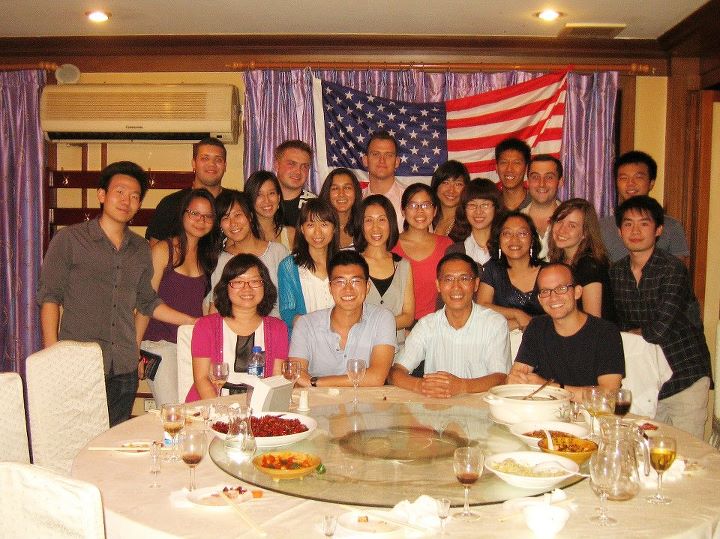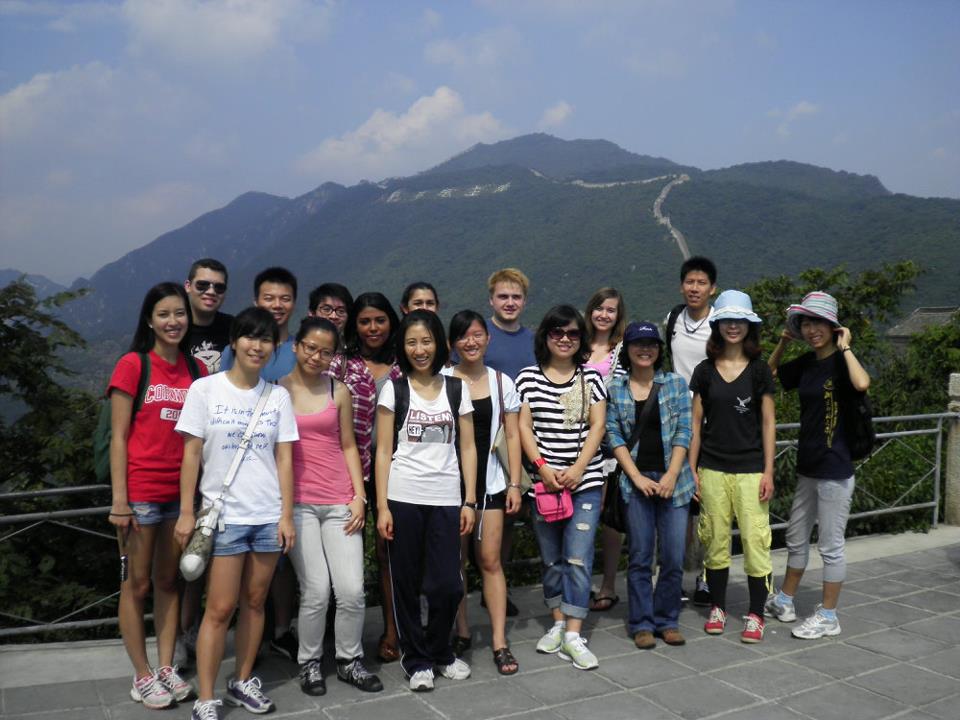Visit China to Understand the World
Happy 2012 everyone! If you are still working on those New Years resolutions, how about thinking on doing something fun and smart at the same time? Nick Kristof on the New York Times just wrote an articles on “Where to Go to Understand the World in 2012” and here’s the first two sentences:
“If you want to understand the world, you need to understand Asia. That, in turn, means setting foot in China and India.”
I hope that bold in China was enough to make it obvious. For those of us in CAPS, pat yourself in the back. For Cornellians who are not, like, what are you waiting for?? As one of the kids (Class ’12) coming back from Beijing, I can only say I regret not doing some of those things Kristof suggested (like visiting the countryside, Datong, Guilin…) For CAPS juniors preparing to go to Beijing, now you know where to visit in China. As for me, I’m halfway to understanding our world now (THANK YOU CAPS!!!).
china reflections
hey all, ian here. i graduated early this past fall, which means that my beijing semester was my conclusion to college. i wrote this article for my personal blog. it contains a few of my thoughts on my experience in china. enjoy:
http://yonasan-azriel.tumblr.com/post/15130800053/my-trip-to-china-has-been-long-over-sorry-for-the
Personal China Blog
Hey everyone, if you’re interested in a more personal CAPS blog, please feel free to visit my site: http://yonasan-azriel.tumblr.com/.
thanks!
Happy Mid-Autumn Festival from CAPS!
CAPS 2012 dining with CAPS alumni, faculty, and administrators in Beijing.

CAPS students with Yin Hongbiao, Professor of History at Peking University and one of the world's leading experts on the Cultural Revolution.
Brown University and the “Year of China”
 This month marks the kickoff of Brown University’s “Year of China,” an effort to “explore the rich culture, economy, and politics of Greater China, investigating its past, examining its present, and contemplating its future.” Throughout the 2011-2012 academic year, Brown will host lectures, cultural events, conferences, and exhibits in an integrated exploration of China.
This month marks the kickoff of Brown University’s “Year of China,” an effort to “explore the rich culture, economy, and politics of Greater China, investigating its past, examining its present, and contemplating its future.” Throughout the 2011-2012 academic year, Brown will host lectures, cultural events, conferences, and exhibits in an integrated exploration of China.
This special initiative is sponsored by the Office of International Affairs and led by Prof. Chung-I Tan, physics faculty. Prof. Tan commented in an interview (available here), “Due to the explosive growth of the Internet, job opportunities for our students are progressively more global in scope. I hope Brown students will more fully appreciate the fact that the futures of America and China are inextricably intertwined, and one can no longer afford to lack insight into the exceptional world player that is China. It is an indispensable partner in addressing global challenges. While we appreciate its past glory and its future promise, China will help to mold our own future. We hope that our students will engage in visits and exchanges to China to increase Chinese awareness of Brown and its unique standing in American higher education.”
Incoming students in Brown’s Class of 2015 were asked to read Leslie Chang’s Factory Girls (2009) as their “First Reading” this summer; the book is about rural migration and China’s modern industrial revolution. The Year of China’s planned events officially begin this month with an exhibition by famed Chinese modern artist, Cai Guo-Qiang. A full listing of this year’s events can be found on the official Year of China website, here.
The Year of China initiative is but one example of the ways Ivy League institutions have attempted to increase exchanges with China in recent years.
Da Shan solo comedy
I love this video of Da Shan. Funny joke, easy to understand. Enjoy!
Best,
Ian
[VIDEO] Cute videos about US-China exchange
This first video was introduced yesterday by Secretary Clinton at an annual event entitled “U.S.-China Consultation on People-to-People Exchange.” I think the second American’s 汉语 is pretty stellar, right?
This second video is a promotional video for a language learning/touring program with EF Tours. Apparently, if you go to Beijing, you are likely to find love in calligraphy class.
On China’s Whitepaper on National Defense 2010
The Chinese government publishes a Defense White Paper approximately every two years with this year’s white paper published well beyond previous publication dates. The Economist argues that this date reflects the complexity and drastic changes in the international community over the past few months, particularly in the Middle East and in North Africa. Somethings to note about The Economist article on the white paper:
- The articles argues China claims a “world resentful of China emergence as a world power” with a citation from the text: “Suspicion about China, interference and countering moves against China from the outside are on the increase.”
- Heavy criticism of China’s human rights record and recent crackdown of political activists.
- Emphasize the importance of the internet on sustainability of long-term regimes and China’s efforts to stifle internet usage.
A copy of a translated defense paper can be found here:
Since I have looked at the translated document rather than the original Chinese version, I cannot make any textual comments on the language used (there are obvious attitude and voice differentiations between the two version) nor can I say much about human rights but I would like to make some comments on the actual context regarding international security.
Interesting to note is China’s approach to the state of international affairs. The paper claims a changing international balance of power filled with contradictions between developed and developing countries and between traditional and emerging countries. It implies that China is in fact a developing countries (many argue otherwise) but also has a mediator role between traditional and emerging countries (no doubt to explain its growing influence in Latin America and Africa). Most significant of all is the statement “Prospects for world multi-polarization are becoming clearer”. This quote within the context of the white paper reveals a cautious yet confident China ready to oppose what is called “American hegemony”. The brief mention of the U.S. strengthening its “military alliances” in the Pacific in the paper’s discussion of Asia-Pacific security and Taiwan issue demonstrates this view.
Another issue I found particularly noticeable was the fact that the paper avoided referring directly to the political and social turmoil in the ME and Africa. Rather it cites political turbulence due to economic, religious, and ethnic issues. The paper did, however, mention Afghanistan followed by a short remark on “relevant powers increasing their strategic investments” and the U.S. increasing its involvement in regional affairs. Given the context and placing of these statements, no doubt China sent the U.S. a quick jab in the side.
China’s Growth By Provinces
While many of us have heard about the huge inequalities within China, it’s sometimes hard to put how large some of these are in perspective. The economist recently published an interactive map that shows which “countries match the the GDP, population and exports of Chinese provinces”. You can find the whole thing in here but I’ll go into some details below.
http://www.economist.com/content/chinese_equivalents
GDP: Guess which province has the Biggest GDP in China? It’s Guangdong (with major cities Shenzhen and Guangzhou) with an overall GDP matching that of Indonesia’s. Rounding up the bottom, we have Tibet with the smallest GDP in China, with one matching that of Malta.
GDP Per Capita: When you take out Hong Kong and Macau, it may be surprising to find that Inner Mongolia has one of the biggest GDP/Capita in all of China (ranked 5). I definitely would not have expected this.
Exports: What’s surprising here is that the export total in Guangdong (ranked #1) is almost double that of Jiangsu (ranked #2). Furthermore, when you compare the eastern seaboard with the rest of China, it’s easy to see why it’s much richer there.
China’s Rise Abroad
While many of us acknowledge China’s rise as a economic and military superpower, many of us have not realized the extent of China’s influence and reach in other countries, especially Africa and Latin America. In recent weeks, I came across some pictures that testify to China’s rising power abroad. Just in the last year China has seen 23.4% (Reuters) increase in foreign direct investments. What is less obvious is Chinese foreign direct investments in other countries. These pictures are truly eye openers to China’s economic reach in developing countries.

Sudam/Mozambique where Chinese state-owned companies have invested heavily in farming and infrastructure.

Ecuador where Chinese state-owned enterprises have invested in dam to be built in the Ecuadorian amazon.

Mozambique Chinese logging activities has contributed to the deforestation of 25% of central Mozambique.

Angola Chinese construction companies have been awarded contracts to build four stadiums for the Africa Cup. Chinese diplomats often portray themselves as a alternative to Western powers.
These pictures are from ForeignPolicy.com, the link is here.



